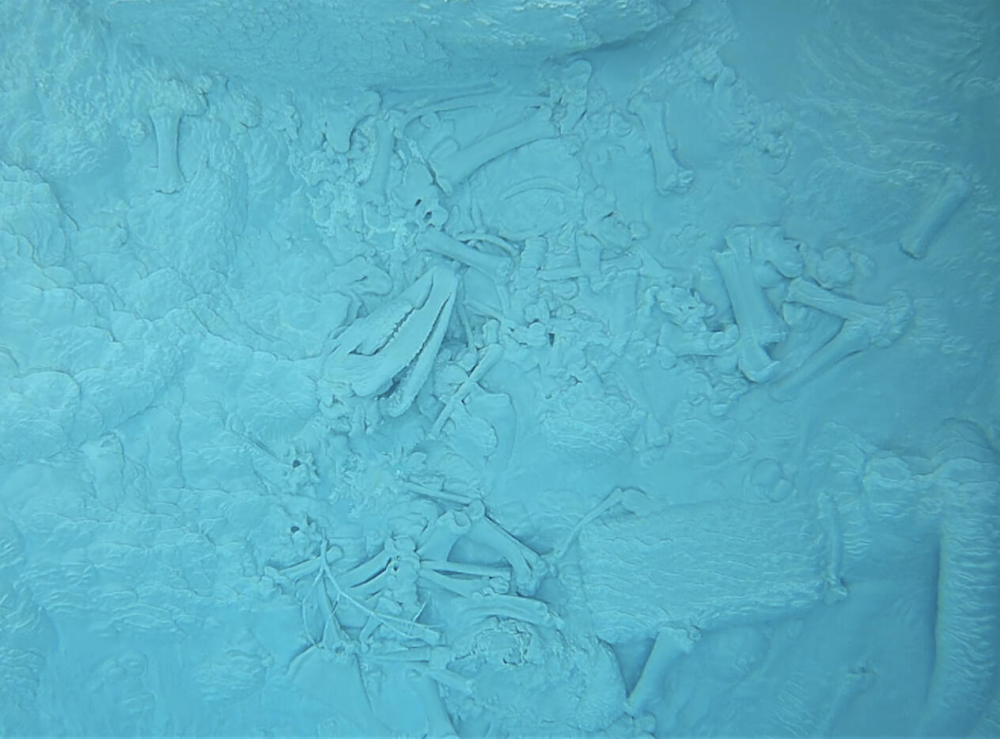A bison got into hot water in the most literal sense in Yellowstone Park on June 21, 2025. The fatal error was witnessed by visitors to the park who saw it stumble into a shallow area before disappearing into deeper water. These springs are so difficult to navigate safely that the decision has been made not to remove the animal, which will be nothing but bones before long, and marks a stark reminder of how dangerous this vibrant wilderness can be.
The grisly incident unfolded at the Grand Prismatic Spring in Yellowstone National Park, where the water simmers at an eye-watering 89°C (192°F). There are multiple images on the internet that demonstrate how wild animals will sometimes wander close to these colorful pools. They will be able to feel the heat, of course, but that doesn’t always mean they’ll back off, and there have been numerous sightings of unlucky animals falling in, as well as surprise discoveries of their remains.
An elk calf met the same fate in the mud pots of West Thumb Geyser Basin a few years ago, and one body of water is so infamous for it that it’s been nicknamed Skeleton Pool. Then there was the study that peered into the Doublet Pool at Geyser Hill near Old Faithful and stumbled upon a very clean (and really quite beautiful) elk skeleton.
Elk skeleton at the bottom of Doublet Pool on Geyser Hill near Old Faithful, imaged by an underwater camera in 2022.
Image credit: Mara Reed, University of California, Berkeley, under research permit YELL-2022-SCI-8058
Part of the perilous nature of these springs is that crusts form at the edges that may feel to wild animals like solid ground. When these break, it can dip the animal into hot water, and the panic to get out may send them deeper in, as was the fate of our ill-fated bison.
“The recent death of a bison at Grand Prismatic Spring is an emphatic example of the danger posed by thermal areas in Yellowstone National Park, but there are some common misconceptions about what makes the hot springs so dangerous,” wrote the Yellowstone Volcano Observatory.
“Many visitors to Yellowstone believe that all of the hot springs in the park are acidic (pH lower than 5), and that the water will cause an acid burn on contact and dissolve any animals or people that fall into the springs. But nearly all major hot springs and geysers in Yellowstone are actually neutral (pH of around 7) or alkaline (pH greater than 7), including almost all of the geysers and hot springs in the famous thermal basins along the Firehole River.”
“What kills most animals and occasionally people who fall into hot springs is not acidity, but temperature. Many hot springs are at or near boiling temperatures, and animal life will not survive for long when exposed, even if only briefly, to water that hot. This is why staying on boardwalks in thermal areas of Yellowstone National Park is a requirement and is so important for visitor safety.”
A bad day for a bison, but it would be a fitting legacy if it could remind even just one person to stick to a safe distance while taking in Yellowstone’s magnificent but deadly water features. Though beautiful, there are perils to be found all around in nature. Just look at the cougar who demonstrated what to do if you want to become a great fossil.
Source Link: Grisly Incident In Yellowstone National Park Shows Just How Dangerous This Vibrant Wilderness Can Be
